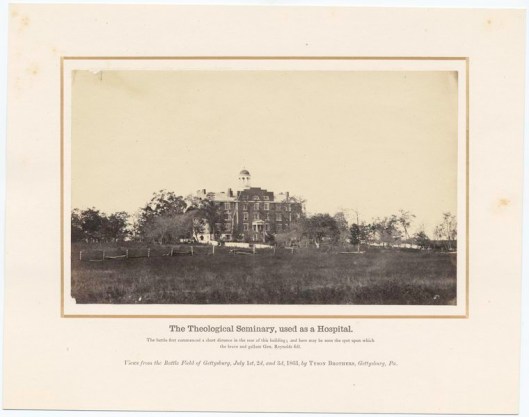 Philip Kennicott of the Washington Post has written a lengthy piece worth the time of anyone interested in the history and fate of our national battlefields. A cottage industry has arisen in the last ten-fifteen years that analyzes the fascinating topic. It is more complicated than this, but one of the problems with battlefield preservation was the implementation of the so-called Antietam Plan in the late nineteenth century. In a nutshell: the Federal government, unwilling to take on new expenses and liabilities, created a barebones Antietam military park, laying a ribbon of right-of-way surrounded by existing farms. With a few exceptions, the Antietam Plan was the norm at all new parks in the coming decades. This was not so much of a problem in, say 1925, when the population of the Greater Washington DC area was still minimal. The land where the fighting took place looked much the same during the Coolidge Administration as it did in 1862. Things changed dramatically in the Automobile Age. For heritage tourism this was not entirely bad. How many anecdotes have you heard from people who remembered visiting a Civil War battlefield during the Centennial? Dad’s Buick is what made that happen. However, the rise of the automobile also led to the building of the interstates, which in turn led to suburbia, which led to encroachment into areas surrounding once untouched battlefields. Now, the Antietam Plan is creating challenges as sprawl shows no signs of abating.
Philip Kennicott of the Washington Post has written a lengthy piece worth the time of anyone interested in the history and fate of our national battlefields. A cottage industry has arisen in the last ten-fifteen years that analyzes the fascinating topic. It is more complicated than this, but one of the problems with battlefield preservation was the implementation of the so-called Antietam Plan in the late nineteenth century. In a nutshell: the Federal government, unwilling to take on new expenses and liabilities, created a barebones Antietam military park, laying a ribbon of right-of-way surrounded by existing farms. With a few exceptions, the Antietam Plan was the norm at all new parks in the coming decades. This was not so much of a problem in, say 1925, when the population of the Greater Washington DC area was still minimal. The land where the fighting took place looked much the same during the Coolidge Administration as it did in 1862. Things changed dramatically in the Automobile Age. For heritage tourism this was not entirely bad. How many anecdotes have you heard from people who remembered visiting a Civil War battlefield during the Centennial? Dad’s Buick is what made that happen. However, the rise of the automobile also led to the building of the interstates, which in turn led to suburbia, which led to encroachment into areas surrounding once untouched battlefields. Now, the Antietam Plan is creating challenges as sprawl shows no signs of abating.
For reasons that need no explanation, most of the battles in the Eastern Theater were fought in the 100 miles or so between Washington and Richmond. The DC area has changed markedly in recent decades. One sees the changing demographics all around. None of this is “wrong.” My family is part of these changes. We rent an apartment in Virginia, shop at the local big box stores to buy our paper towels and other housewares, and are figuring out little-by-little where to find the small pleasures of modern life we have come to expect and enjoy. We live in the twenty-first century. This past Sunday friends visited the Hayfoot at our apartment and said the area had evolved a great deal in just the few years since they themselves moved to a different part of the region. The extension of the Metro will accelerate the change even more. There are no easy answers when it comes to preservation.
(image courtesy NYPL)







